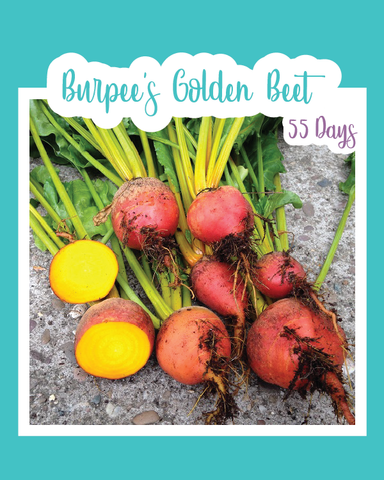
Detroit Dark Red Beets
Standard Packet Seed Count: Approx. 100 seeds
Days to Maturity: 60 days
Description: This heirloom beet is one of the most popular beets around! The roots are about 3" in diameter, and keep well for pickling and canning. The roots are blood red in color, with virtually no zoning, and medium sized green tops with tinges of red. The tops can be harvested early and used for salad greens or can be sauteed and cooked similarly like swiss chard.
How To Grow
Sowing: Sow beet seeds in well-worked, well drained soil in full sun. Beets are sensitive to acidic soils and prefer a pH of 6.0 – 7.0. If your soil is more acidic, add Garden Lime as directed on the bag. Sow thinly, in rows 12 inches apart and cover with ½ inch of fine soil. Seedlings emerge in 14-21 days. Thin to about 3" apart, when seedlings are 1-2" tall. Beet seeds are actually clusters of seeds and require more thinning than other crops.
Growing: Keep plants well watered during dry periods to promote uninterrupted growth. They need about 1 inch of water a week. If you water with overhead sprinklers, water early in the day so the foliage has time to dry off before the evening, to minimize disease problems. Avoid fertilizer that is high in nitrogen. A basic 5-5-5 fertilizer is sufficient for good beet root and beet green development.
Harvesting: Detroit red beets also produce lovely and tasty red-stemmed tops that mature in 40 days. One-third of the tops can be harvested without damaging the plant. Harvest roots at about 1 inch for baby beets, up to 3 inches for mature beets. Cook beet greens like spinach, or saute in butter and garlic for a tasty treat. Beet roots can be pickled, grilled, baked, or broiled. Beet plants must weather the winter, in order to produce seed. In warmer climates, simply mulch the plants. In cooler climates, dig up the roots and store them in sand, without the roots touching each other, in a cool and humid location. Then plant them again early spring. The plants will soon go to seed; wait until the seed heads are fully grown and dry before removing them, and store the seeds for up to 5 years.




